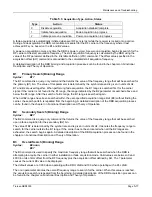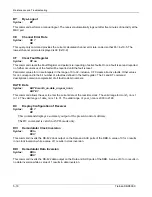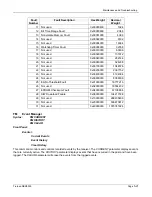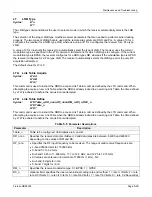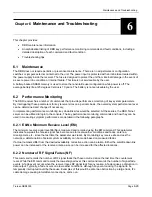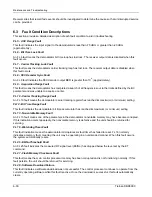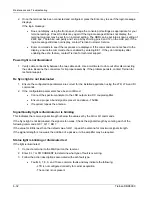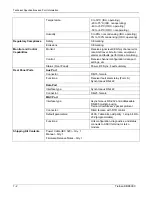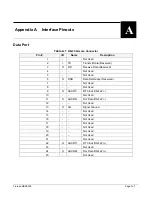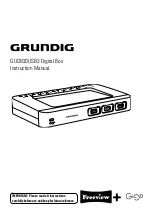
Maintenance and Troubleshooting
Chapter 6
Maintenance and Troubleshooting
6
This chapter provides:
•
DBR maintenance information
•
An alphabetical listing of DBR key performance monitoring commands and fault conditions, including a
detailed description of each command and fault condition
•
Troubleshooting tips
6.1 Maintenance
The DBR does not require periodic or preventive maintenance. There are no adjustments or configuration
switches or jumpers external or internal to the unit. The power input is protected with an inline fuse located within
the power supply inside the receiver. The fuse is designed to protect the unit from internal damage in the event of
a severe power line condition or internal failure. This fuse is not serviceable by the user.
A battery-backed SRAM memory is used to store the nonvolatile user configuration while power is off. The
average battery life at 25 degrees Celsius is 10 years. The battery is not serviceable by the user.
6.2 Performance
Monitoring
The DBR receiver has a number of commands that provide performance monitoring of key system parameters.
By interrogating these parameters for key receiver sites on a periodic basis, the overall system performance level
can be determined and changed if necessary.
In implementing performance monitoring, key downlink sites would be selected. At these sites, the DBR Telnet
server can be utilized to login to the console. The key performance monitoring commands and how they can be
used in measuring symptom performance are detailed in the following paragraphs.
6.2.1 Eb/No Minimum Receive Level (EM)
The minimum receive signal level Eb/No is measured and recorded using the EM command. This parameter
indicates how weak the receive signal has become due to local weather conditions and fades, antenna
misalignment, etc., since the last time the parameter was reset. By monitoring key receive sites across the
network, a determination of actual system availability can be made based on measured fades.
If actual numbers differ from the desired availability, corrective action can be taken. Either the satellite downlink
power can be increased or the receive antenna size can be increased for the affected locations.
6.2.2 Number of RF Signal Fades (NF)
This command records the number of RF signal fades that have occurred since the last time the counter was
reset. While the EM command records the lowest signal level, this command records the number of signal fade
events. A fade event occurs when the receiver loses RF signal lock for any reason. A fade causes a disruption in
data output. Typically, a fade occurs due to weather conditions, although any event causing the signal to be
temporarily interrupted could be the cause. Examples of this would be antenna obstruction by a large truck, IFL
cable damage causing intermittent connections, and so on.
Tiernan DBR3000
Page
6-29
Summary of Contents for DBR3000
Page 2: ...Overview Page 1 2 Tiernan DBR3000 ...
Page 6: ...Warranty Policy Page vi Tiernan DBR3000 ...
Page 10: ...Preface Page x Tiernan DBR3000 ...
Page 14: ...Safety Precautions Page xiv Tiernan DBR3000 ...
Page 64: ......
Page 73: ...Troubleshooting Figure C 1 Coax Cable and F Connector Assembly Tiernan DBR3000 Page B 5 ...



